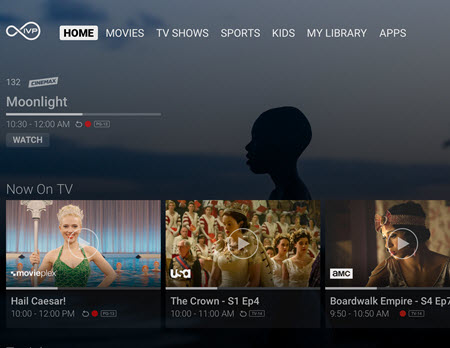Cisco Attacks Ericsson’s Mediaroom Market

Ericsson isn’t the only company providing an upgrade path for Mediaroom, the IPTV platform it acquired from Microsoft in 2013.
Cisco Systems is applying some competitive pressure on Ericsson as it moves ahead with a replacement program that takes direct aim at Mediaroom’s market. In addition to converting those service providers to Cisco’s own cloud-based, multiscreen offering, the Infinite Video Platform (IVP), Cisco said it can help operators make the move without swapping out their old set-tops.
Cisco embarked on the Mediaroom replacement program after a number of its customers “expressed concerns around where Ericsson was with their media division” and asked if Cisco would be interested in providing an alternative offering, Ramin Farassat, director of product line management and product marketing for Cisco’s Service Provider Platforms & Applications unit, said.
Farassat said those conversations got underway about a year ago. Coincidentally, they were happening around the time a Bloomberg report suggested Ericsson had hired banks to review its media business, including the search for a possible buyer for its broadcast and media services unit.
Ericsson hasn’t confirmed those plans, but last year it renamed its Broadcast and Media Services business unit Red Bee Media, sparking fresh speculation the decision was tied to possible M&A activity involving that division.
UPDATE (1-31-2018): Ericsson Sells Majority Stake in Media Solutions Unit
Enabling the Move to IVP
The premise behind Cisco’s Mediaroom replacement program is to enable those service providers to move to IVP, which supports linear TV, video-on-demand, cloud DVR services (including 4K) and new interfaces and voice navigation for set-tops and mobile devices, in a way “that doesn’t actually reinvent the wheel,” Farassat said. “We didn’t want to introduce another completely new architecture to customers.”
While Cisco’s Mediaroom replacement approach leans on the IVP cloud backend for video management and distribution, it doesn’t require the operator to swap out most of the boxes they are currently using for Mediaroom. Those include boxes originally made by suppliers such as Arris, Technicolor and Cisco. (Cisco sold its consumer premises equipment business to Technicolor in late 2015.)
Cisco’s program calls for those operators to convert those legacy boxes to support IVP, a move that does require a changing out of the box’s operating system, middleware and user interface.
Farassat said Cisco did a survey of boxes now used by Mediaroom to see if they have the processing and memory required to run IVP. It found that most of them — save for a few first-generation models still in the field — are eligible for the conversion/upgrade.
Cisco is also looking to complement those older Mediaroom boxes (to be outfitted with a new Linux-based platform during the conversion) with new, more advanced boxes that run Android TV.
However, both environments — the legacy boxes and the new ones running Android TV — would use the same style of user interface. Those UIs “look identical and have the same performance,” Farassat said.
Making Newer Connections
In addition to operator-supplied boxes and smartphones and tablets, IVP’s converged core also would pave the way for operator partners to run services on TV-connected retail streaming devices.
For the set-top box conversion process, Cisco is setting up a way for operators to target individual boxes or groups of deployed boxes without requiring expensive truck rolls. For example, the consumer would get a message prompting them to reboot the box to receive the new software, then reboot it again for the new interface to be installed.
“Everything is done remotely,” Farassat said.
Service providers that opt for the program will be running Mediaroom and IVP in parallel until the conversion ends. After that, they can shut down the Mediaroom servers, encoders and other elements of the platform.
Cisco has not announced any takers for its program, though Farassat expects that trials will be underway as early as the end of Q1 2018 or by the start of Q2.
Don’t expect Ericsson to merely stand by as Cisco attempts to steamroll its Mediaroom market. Ericsson has had some success in getting Mediaroom partners to upgrade to MediaFirst, its new cloud-based, multiscreen platform.
Earlier this month, Bell Canada and Ericsson expanded a multiyear deal that will pave the way for BCE to upgrade to MediaFirst. Telus, another Mediaroom customer, is also upgrading to MediaFirst to augment Optik TV, its full freight-managed IPTV service. Telus is also using MediaFirst to power Pik TV, an IP-delivered skinny bundle service introduced last April that runs on smartphones, tablets and an Android TV-powered box sold by Telus.
J-Com, Japan’s largest cable operator, and Canada’s SaskTel are other announced MediaFirst customers. AT&T, a longtime Mediaroom user for its U-verse platform, said in 2015 it had tapped Ericsson to “enhance” its telco TV platform and evolve its satellite and wireline TV offerings in the wake of the AT&T-DirecTV merger. That announcement did not mention MediaFirst, but last year FCC documents revealed AT&T was working on an Android TV-powered device.
Though Cisco is using IVP to target the Mediaroom base, the vendor has already notched several deployments of it with service providers outside the Mediaroom universe that include Vodafone (for its GigaTV service in Germany), Canada’s Eastlink and Israel’s YES, among others.
Multichannel Newsletter
The smarter way to stay on top of the multichannel video marketplace. Sign up below.
